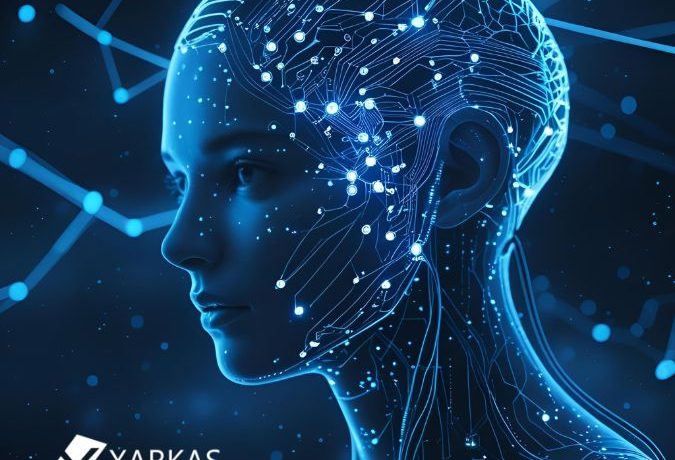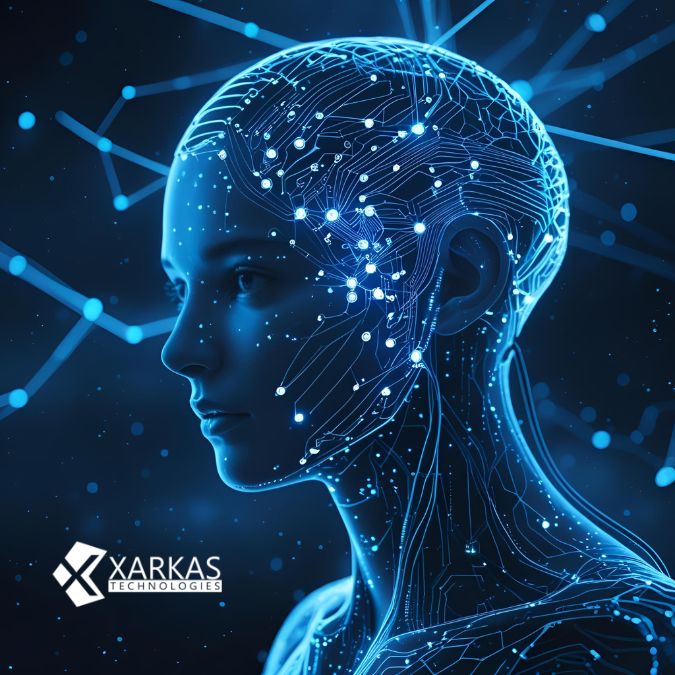
Blue Artificial Intelligence: The Future of AI Beyond Imagination
Introduction to Blue Artificial Intelligence
When we hear “Artificial Intelligence,” we often think of logic-driven machines, robotic assistants, or voice-command systems like Siri and Alexa. But a new wave is on the horizon—Blue Artificial Intelligence—a more emotionally aware, ethically grounded, and deeply human-centric approach to AI.
Table Of Content
- Introduction to Blue Artificial Intelligence
- Evolution of Artificial Intelligence
- Core Principles of Blue AI
- 1. Emotional Intelligence Integration
- 2. Ethical and Moral Frameworks
- 3. Decision-Making Under Ambiguity
- ⚖️ Blue AI vs Traditional AI
- Applications of Blue Artificial Intelligence
- Healthcare
- Education
- Business
- ️ Smart Cities
- Blue AI in Everyday Life
- ❤️ Blue AI and Emotional Intelligence
- Ethics and Consciousness in Blue AI
- Technologies Powering Blue AI
- ⚠️ Challenges and Risks
- Future Prospects of Blue AI
- Major Companies and Innovations in Blue AI
- The Human-AI Connection
- ❌ Myths and Misconceptions
- Preparing for a Blue AI World
- ✅ Conclusion
- ❓ FAQs
- 1. What makes Blue AI different from regular AI?
- 2. Is Blue AI already in use?
- 3. Can Blue AI replace human emotions?
- 4. Is Blue AI safe?
- 5. How can I learn about Blue AI?
The word “Blue” isn’t just a color; it represents depth, calmness, emotional intelligence, and trust—all the qualities this next-gen AI aims to embody. It’s not just about thinking machines, but feeling, understanding, and empathizing machines.
Evolution of Artificial Intelligence
We’ve come a long way since the early days of AI. From rule-based systems to machine learning, AI now powers nearly everything—from search engines to self-driving cars. But the evolution doesn’t stop there.
Blue AI represents the fourth generation of AI:
-
Reactive Machines – Basic algorithms with no memory (e.g., Deep Blue)
-
Limited Memory – Systems like chatbots or recommendation engines
-
Theory of Mind AI – Understanding emotions and beliefs
-
Blue AI – Emotionally intelligent and ethically guided
Core Principles of Blue AI

1. Emotional Intelligence Integration
Blue AI is designed to understand human emotions, tone, and body language. It reacts with empathy, much like a human would. It doesn’t just process language—it feels your message.
2. Ethical and Moral Frameworks
Unlike cold, logical AI systems, Blue AI follows a value-based architecture. It’s trained on ethical scenarios and designed to make decisions with a conscience.
3. Decision-Making Under Ambiguity
Life isn’t always black and white. Blue AI thrives in the gray zones, making decisions where logic alone can’t help—like in emergency triage, mental health counseling, or diplomatic negotiations.
⚖️ Blue AI vs Traditional AI
| Feature | Traditional AI | Blue AI |
|---|---|---|
| Emotional Understanding | None | Advanced Emotional IQ |
| Ethical Reasoning | Rule-Based or None | Built-in Ethical Framework |
| Contextual Decisions | Limited | Adaptive and Contextual |
| Trust & Safety | Varies | High Priority |
Blue AI doesn’t just perform tasks—it understands purpose.
Applications of Blue Artificial Intelligence
Healthcare
Imagine a virtual assistant that can sense your emotional stress, monitor your voice tone, and suggest therapy before a breakdown happens. Blue AI in healthcare means more compassionate diagnostics and personalized care.
Education
Teachers can’t always tailor lessons for every student. But Blue AI can. It adapts not only to your skill level but also to your mood, improving learning outcomes drastically.
Business
From hiring the right candidates to making boardroom decisions, Blue AI can act as an empathy coach, reducing bias and fostering ethical leadership.
️ Smart Cities
Blue AI can help build responsive governance systems—traffic lights that adjust to road rage levels, or public service chatbots that understand when a citizen is stressed.
Blue AI in Everyday Life
Ever had a bad day and wished someone understood without you saying a word? That’s what Blue AI enables—homes that respond to your emotional state, virtual pets that comfort you, or car systems that calm you down when you’re angry.
❤️ Blue AI and Emotional Intelligence
Just like you can sense when a friend is sad or upset, Blue AI can too. It can:
-
Detect microexpressions and vocal changes
-
Adjust tone in real-time
-
Respond with emotionally aware suggestions
Ethics and Consciousness in Blue AI
Should a machine have moral obligations? That’s the big question.
Blue AI is designed with ethical reasoning models, making it fit for tasks involving trust, such as elder care, mental health, or even legal analysis.
Technologies Powering Blue AI
Blue AI stands on some serious tech foundations:
-
Neuromorphic chips that mimic human brain neurons
-
Quantum AI for parallel emotional reasoning
-
Deep Emotional Neural Networks that can detect subtle emotional cues
⚠️ Challenges and Risks
With great power comes… complex risks:
-
Privacy invasion: Emotional data is sensitive.
-
Emotional manipulation: AI could exploit human moods.
-
Overdependence: People may rely too much on emotionally comforting machines.
Future Prospects of Blue AI
The future is bright—and blue. In the next 10–20 years:
-
Blue AI could team up with AGI
-
Act as emotional navigators in space missions
-
Become digital diplomats or relationship coaches
Major Companies and Innovations in Blue AI
-
IBM’s Blue Brain Project: Recreating the human brain in AI
-
Affectiva and Emotient: Emotional recognition companies
-
Startups like Replika, Woebot, and Kuki AI are already leading the space
The Human-AI Connection
Blue AI isn’t about replacing people. It’s about building deeper, safer, more trustworthy relationships between humans and machines.
Think of it as your emotional co-pilot—never leading, always guiding.
❌ Myths and Misconceptions
-
“Blue” means sad AI – False. It refers to emotional depth and trust.
-
It can replace therapists – Not yet. It assists but doesn’t replace.
-
Blue AI is just science fiction – Wrong. It’s already happening.
Preparing for a Blue AI World
If you want to thrive in a Blue AI future:
-
Learn about AI ethics
-
Understand emotional intelligence
-
Develop interdisciplinary skills: psychology + coding is a powerful combo
Governments, too, must:
-
Set regulations
-
Ensure inclusivity
-
Fund emotional AI research responsibly
✅ Conclusion
Blue Artificial Intelligence isn’t just the next chapter in AI—it’s a new story altogether. One where machines don’t just think fast—they feel right. Whether in classrooms, hospitals, offices, or homes, Blue AI is poised to reshape how we interact with technology—with empathy, ethics, and humanity at the center.
❓ FAQs
1. What makes Blue AI different from regular AI?
Blue AI incorporates emotional intelligence and ethical reasoning, unlike traditional logic-driven AI.
2. Is Blue AI already in use?
Yes! Tools like Replika, Woebot, and IBM’s emotional AI models are early examples.
3. Can Blue AI replace human emotions?
No, but it can complement and understand human emotions to enhance support and decision-making.
4. Is Blue AI safe?
It depends on how it’s built and used. Ethical frameworks and regulations are essential to ensure safety.
5. How can I learn about Blue AI?
Start with emotional intelligence studies, AI ethics, and follow research by companies like IBM, Affectiva, and open-source communities.







No Comment! Be the first one.